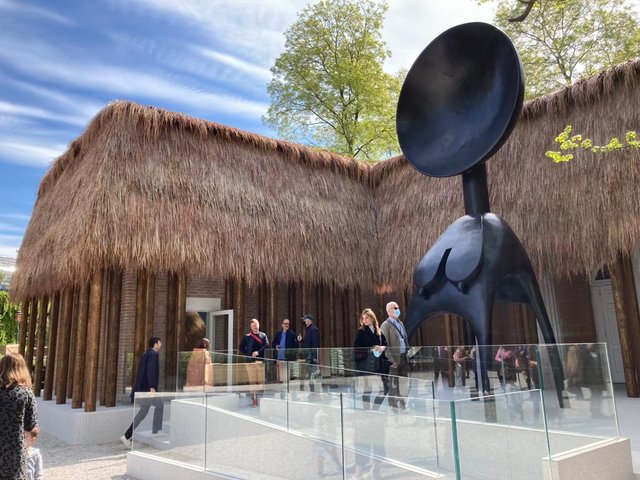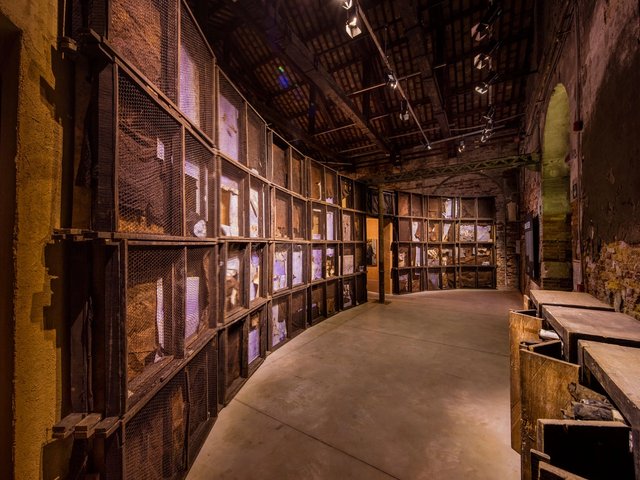Lithuania Pavilion
Sun & Sea (Marina), Lina Lapelyte, Vaiva Grainyte and Rugile Barzdziukaite
Venue: Marina Militare, Calle de la Celestia, Castello
From 10am to 6pm every Saturday until the end of October, the Lithuanian pavilion is offering the whimsical spectacle of a beach of holidaymakers singing an “opera-performance” in a building that still belongs to the Arsenale’s military zone. Audience members become voyeurs, gazing down from balconies at the sandy stage set, where performers dressed in bathing suits and surrounded by seaside paraphernalia (lunch boxes, Sudoku, colouring books), casually sprawl on their towels and sun loungers. Their stream-of-consciousness libretto, alternating between solo songs and group choruses, is by turns prosaic, poetic, bizarre and often very funny. But this apparently charming microcosm of humanity comes with a barbed ecological message for the age of climate emergency—stay until the end for the full apocalyptic impact.
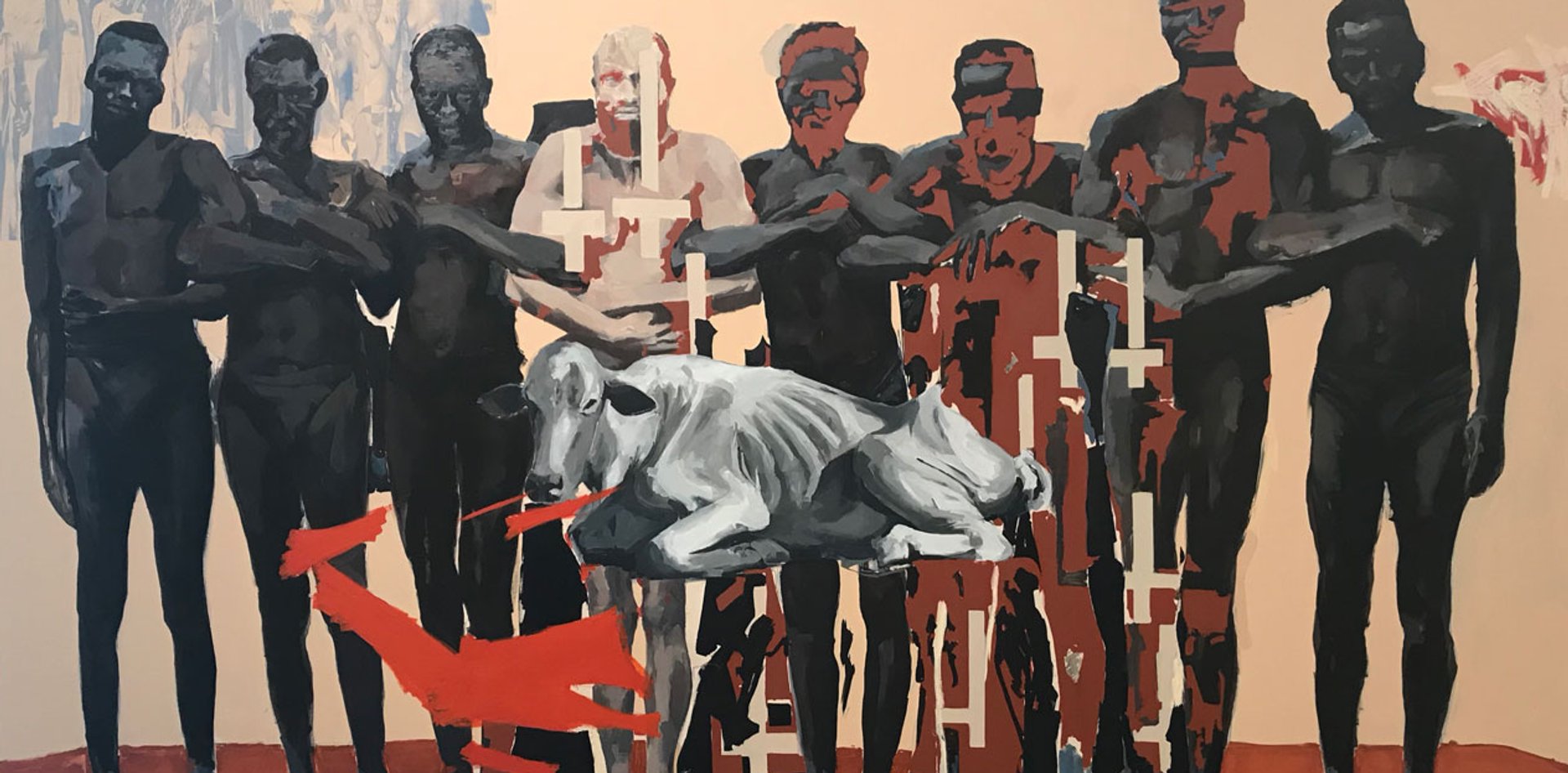
Kudzanai-Violet Hwami, By the Fruits You Will Know Them (2019) © The Art Newspaper
Zimbabwe Pavilion
Soko Risina Musoro, Neville Starling, Kudzanai-Violet Hwami, Georgina Maxim, Cosmos Shiridzinomwa
Venue: Istituto Provinciale per l'Infanzia, Santa Maria Della Pieta
The theme of the Zimbabwean Pavilion is the corrosion of family life as economic and political pressures force a growing number of people to live estranged lives abroad. Dominating the space are show-stopping paintings by UK-based Kudzanai-Violet Hwami. At 26, Hwami is one of the youngest artists in the Biennale but is already a rising star (she will have her first institutional show at London’s Gasworks this autumn). Her work reflects the challenges of diasporic life and the loneliness that accompanies the separation from the native land. Another artist, Georgina Maxim uses handed-down items of clothing to pay tribute to the role that relatives can play in the fortunes of an individual.
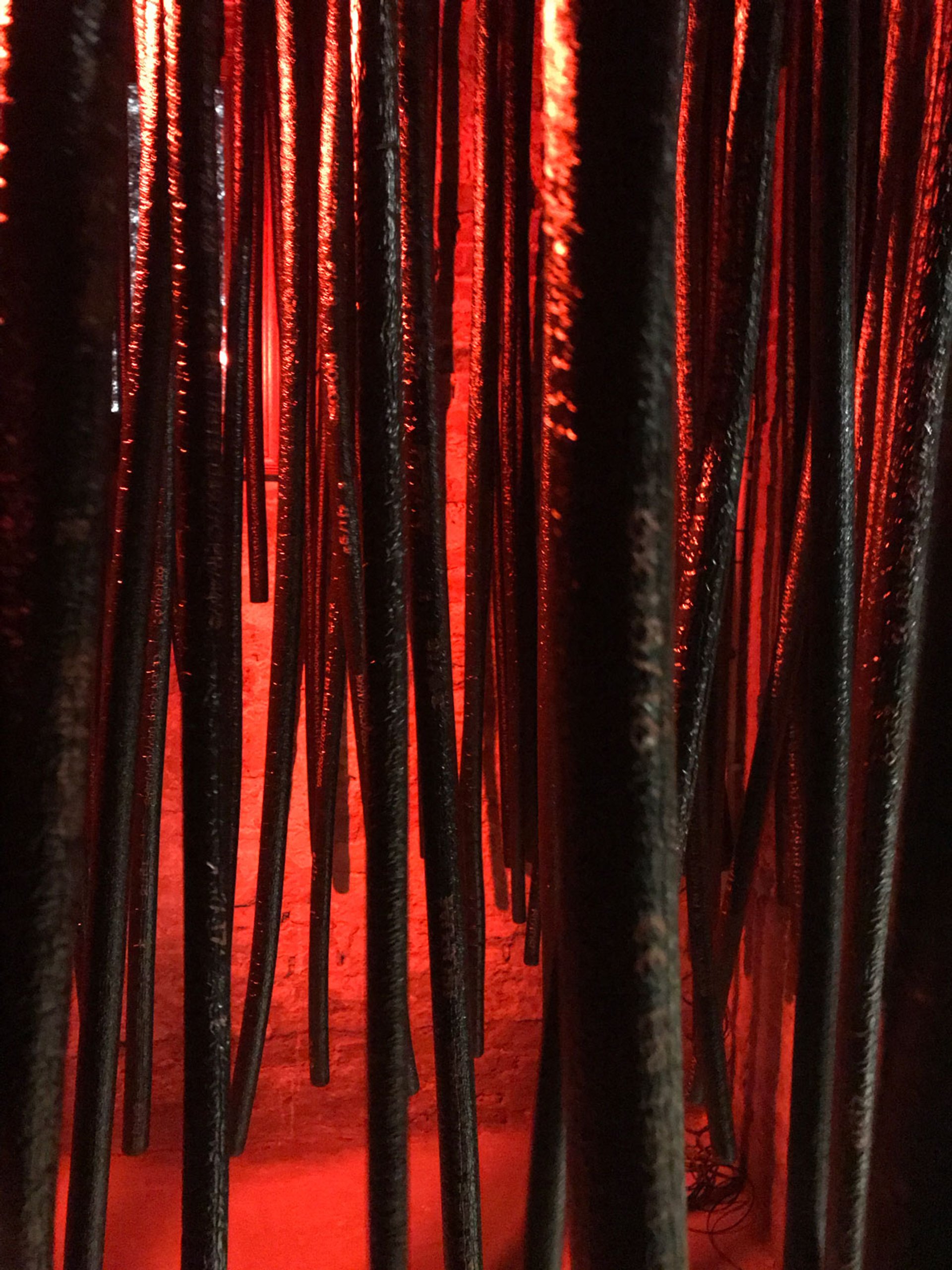
Jantsankhorol Erdenebayar's works in the Mongolian Pavilion © The Art Newspaper
Mongolia Pavilion
A Temporality, Jantsankhorol Erdenebayar (Jantsa), with traditional Mongolian throat singers and Carsten Nikolai AKA Alva Noto
Venue: Calle dell Forno, Castello
The dark alleyway of Calle del Forno that leads to the cavernous space of a former bakery sets the tone for the low, guttural sounds that await you in this pavilion. Mongolian throat singing is a hugely complicated technique that takes decades to master. It allows the singer to produce multiple sounds at once: a low constant drone as well as higher notes. Here, the ancient practice has been given a contemporary twist thanks to the German artist and musician Carsten Nikolai, also known as Alva Noto. Imposing black sculptures by the Los Angeles-based, Mongolian artist Jantsankhorol Erdenebayar are dotted throughout the pavilion. Great art comes from the heart, but— it turns out—it works just as well coming from the throat.
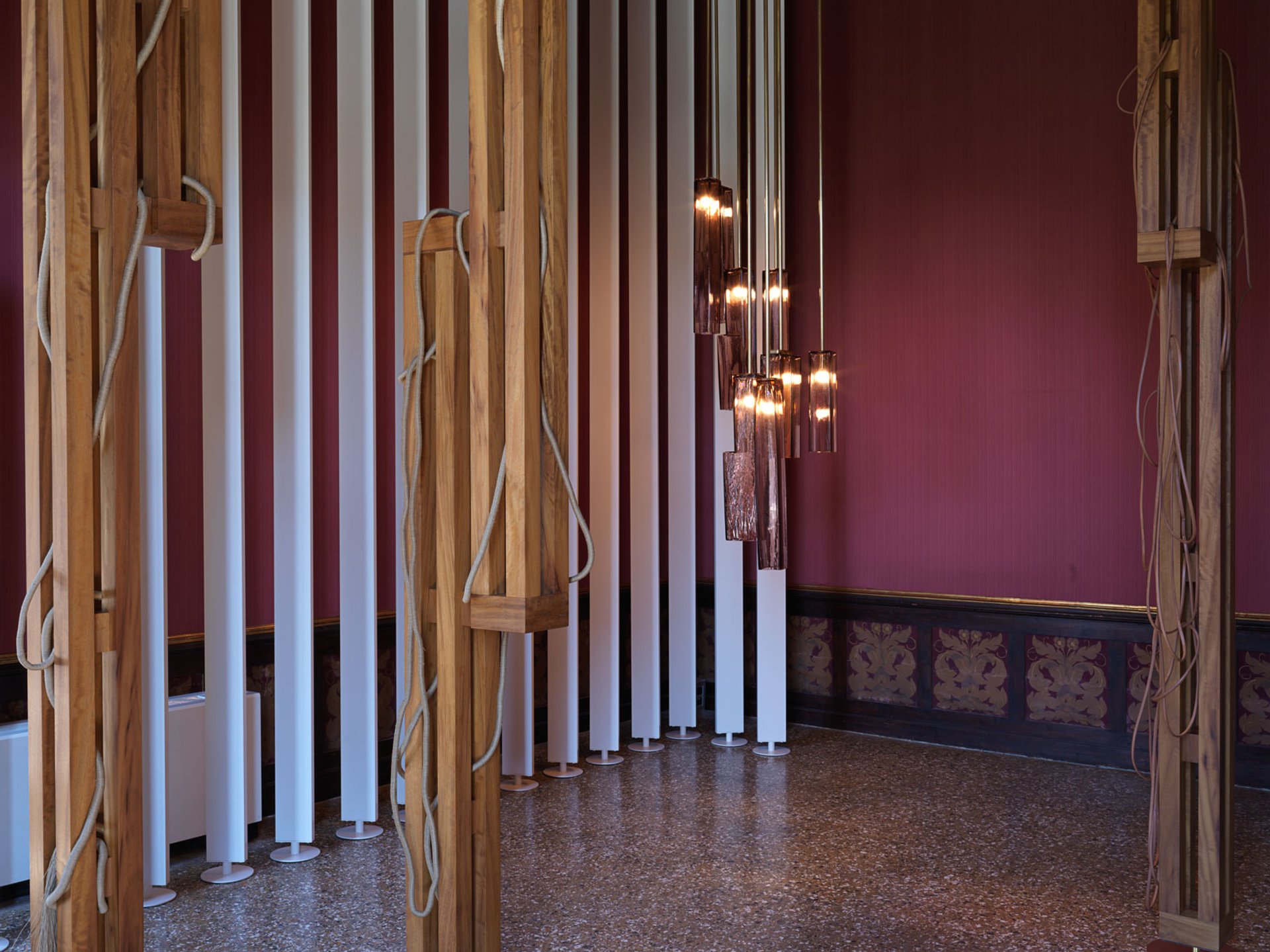
Leonor Antunes's A surface, a seam, a hinge, or a knot in the Portugal Pavilion Courtesy the artist and Air de Paris, Paris; Marian Goodman Gallery, New York, Paris & London; kurimanzutto, Mexico City & New York; Galeria Luisa Strina, São Paulo.
Portugal pavilion
A seam, a surface, a hinge, or a knot, Leonor Antunes
Venue: Palazzo Giustinian Lolin, San Marco, 2893
Leonor Antunes elegantly ponders the language and histories of Venetian Modernism. She begins with a black cork floor on the androne, the lowest level of this Grand Canal palazzo, dotted with brass squares. It is inspired by a Carlo Scarpa mosaic and lit by dramatically shaped lights designed by Egle Trinacanato, the first woman to graduate from Venice’s architecture school. Upstairs are partitions reaching up to the ceilings, echoing the rhythms of their wooden beams. Punctuating the space are tubular structures supporting tangled leather cords and woven screens and cooly minimal lights made in Murano glass. Everything evokes history: Scarpa, Trinacanato, another female architect, Franca Helg, and Savina Masieri, a leading figure in Modernist Venetian circles. It adds up to a gorgeous, poetic, even elegiac show, in which sculpture speaks the language of buildings and furniture.
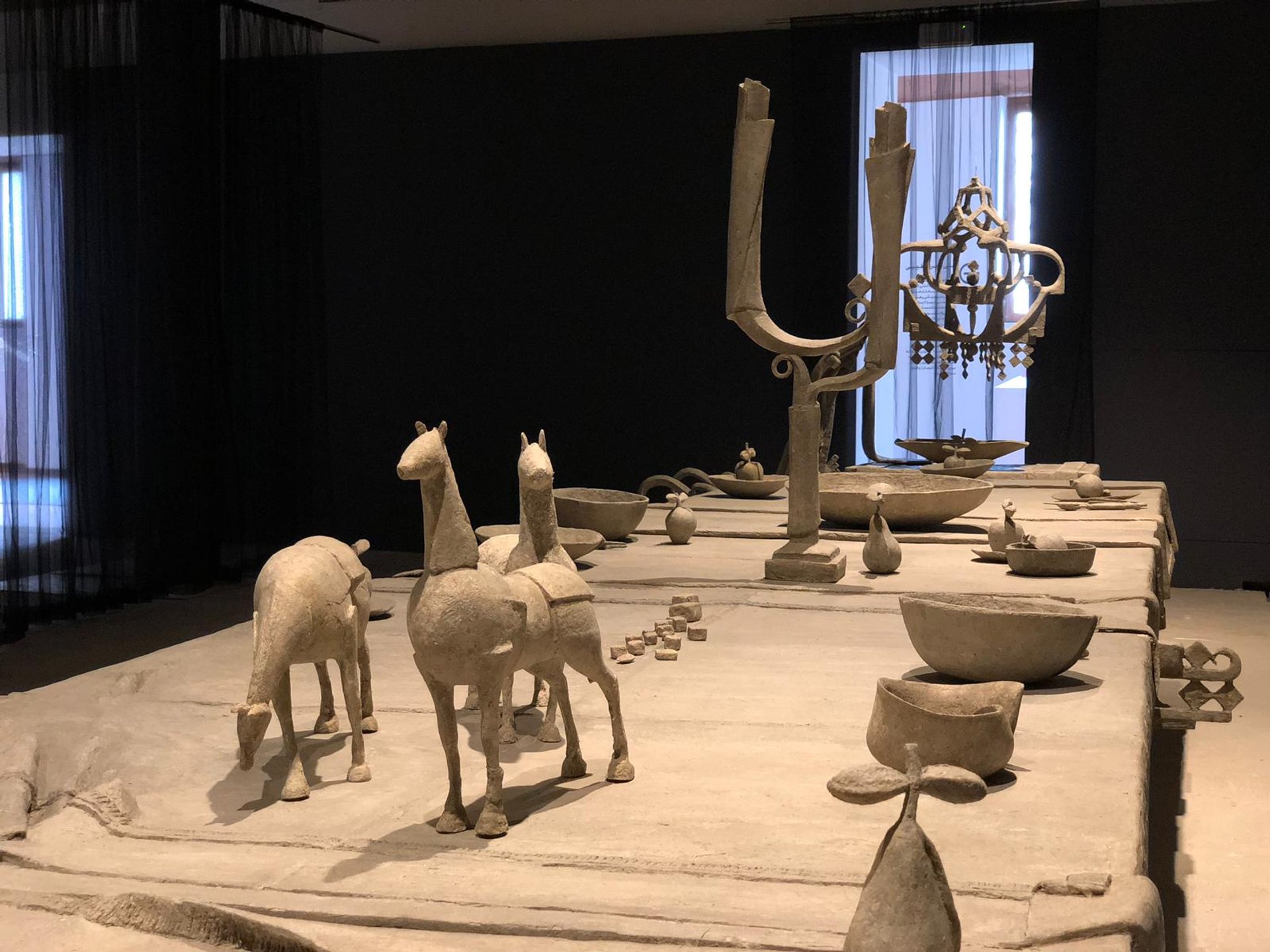
Reza Lavassani's work in the Iran Pavilion Courtesy of the Iran Pavilion
Iran Pavilion
Of Being and Singing, Reza Lavassani, Samira Alikhanzadeh, Ali Meer Azimi
Venue: Fondaco Marcello, San Marco 3415
Banqueting tables stretch down the room, laden with cutlery flowers, fruit, candlesticks, toy horses, while a giant chandelier reaches overhead. The haunting installation is entirely fashioned from grey paper maché by the veteran Iranian artist Reza Lavassani, in a meditation on the cycle of life. Nearby an old man’s empty armchair awaits, signifying absence, and death. Shipped to Venice in five crates, the work is a highlight of the Iranian national pavilion. A second artist Sami Alikhanzadeh uses found photographs to create haunted hanging transparencies of young Iranian women of the past, defined by simple dresses and shoes.
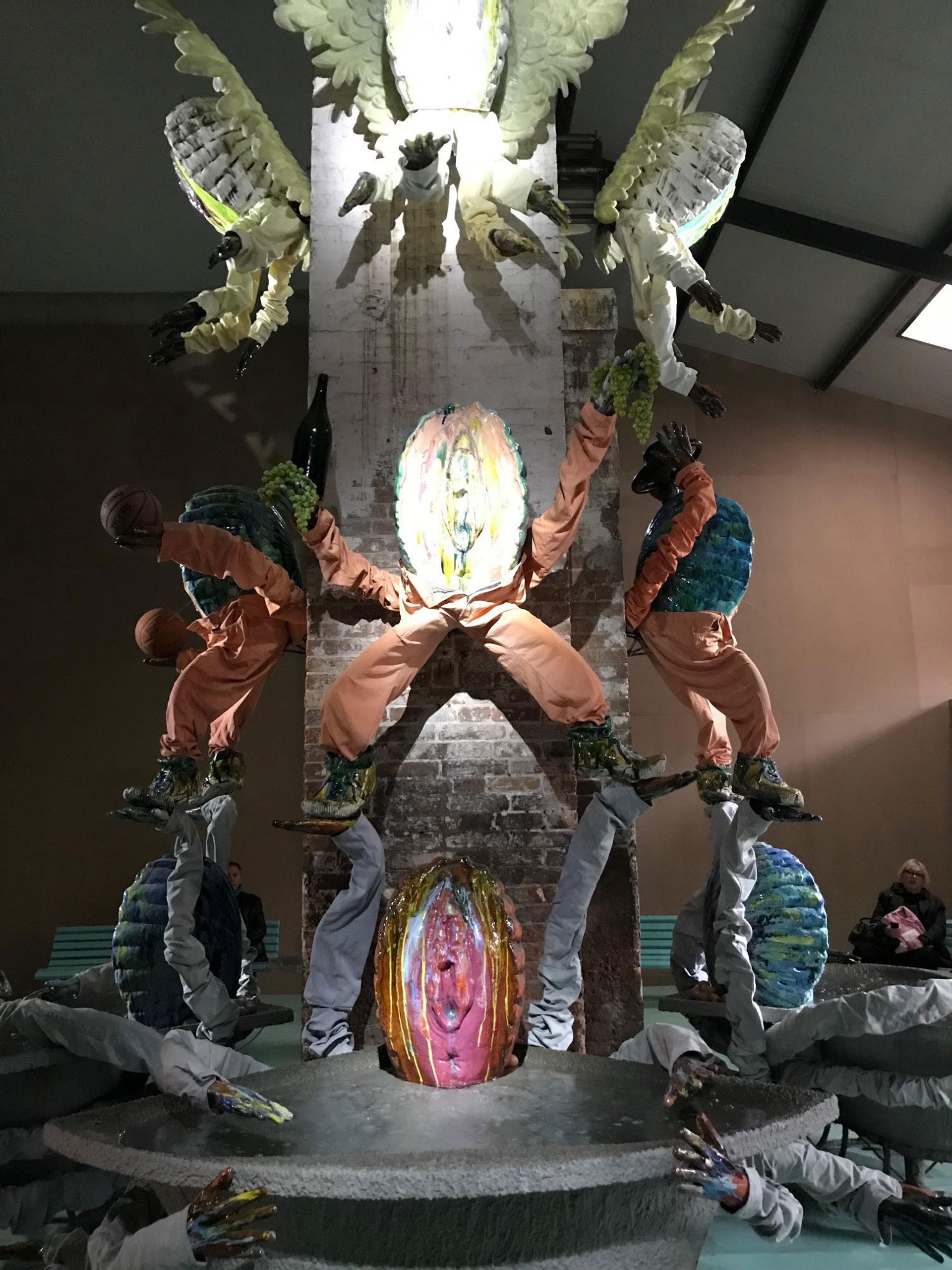
Kris Lemsalu’s display in the Estonian pavilion © The Art Newspaper
Estonia Pavilion
Birth V, Kris Lemsalu
Venue: Legno & Legno, Giudecca 211
Water spurts out of enormous ceramic vaginas as seaweed plucked fresh from the lagoon hangs off the walls: Kris Lemsalu’s Estonian pavilion installation on Giudecca is not subtle, but it is evocative. A boat filled with multi-handed characters greets you first, as if shipwrecked from the grand canal, leading to an enormous fountain covered in oval shapes that leak and dribble into big grey bathtubs. It works so well because it is not just playful, sexual and pretty, but because it feels like it actually reacts to its environment, like it belongs in Venice; not like it was just plonked here by some curator.



